Bat Facts
Chiroptera
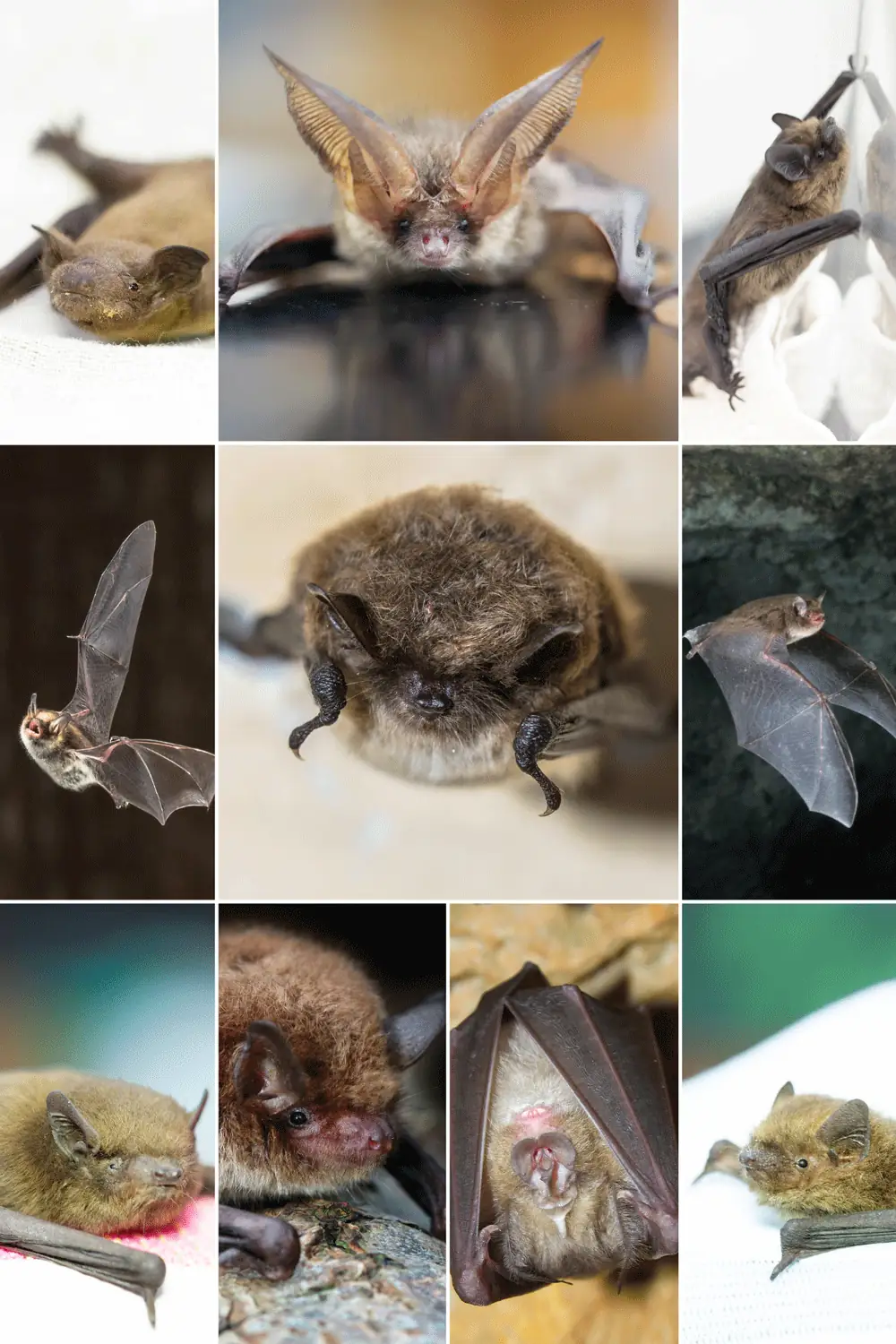
Species
There are 18 species of bat in the UK, 17 of which are known to be breeding on our shores. All 18 species of bat are protected under the Wildlife and Countryside Act. The common pipistrelle and soprano pipistrelle are the most common British bats.
Scientific Names:
Alcathoe bat: Myotis alcathoe
Barbastelle: Barbastella barbastellus
Bechstein’s bat: Myotis bechsteinii
Brandt’s bat: Myotis brandtii
Brown long-eared bat: Plecotus auratus
Common pipistrelle: Pipistrellus pipistrellus
Daubenton’s bat: Myotis daubentoniid
Greater horseshoe bat: Rhinolophus ferrumequinum
Grey long-eared bat: Plecotus austriacus
Leisler’s bat: Nyctalus leisleri
Lesser horseshoe bat: Rhinolophus hipposideros
Nathusius’ pipistrelle: Pipistrellus nathusi
Natterer’s bat: Myotis nattereri
Noctule: Nyctalus noctule
Serotine: Eptesicus serotinus
Soprano pipistrelle: Pipistrellus pygmaeus
Whiskered bat: Myotis mystacinus
Facts
Size: The larger bats in the UK are the noctule and greater horseshoe bat, with a wing span of up to 38cm. The pipistrelle is also the smallest British bat, but, despite the pipistrelle being small in stature (weight approximately 5 grams),they can eat up to 3,000 insects in a single night.
Diet: Insectivores: British bats eat insects and nothing else. This makes them valuable friends and allies, as many farmers and gardeners seek to reduce insect numbers- some insects can cause damage to valuable crops and flowers.
Average Lifespan: The lifespan of a UK bat can vary a lot. The most common species, the pipistrelles, have an average lifespan of four to five years. The longest-lived species include Brandt’s bat, which can live up to 40 years, and the greater horseshoe, which can make it to 30 years.
When to see them: April to November
UK conservation status: The grey long-eared bat is endangered; the barbastelle and the serotine are vulnerable. Leisler’s bat and Nathusius’ pipistrelle are classed as near vulnerable
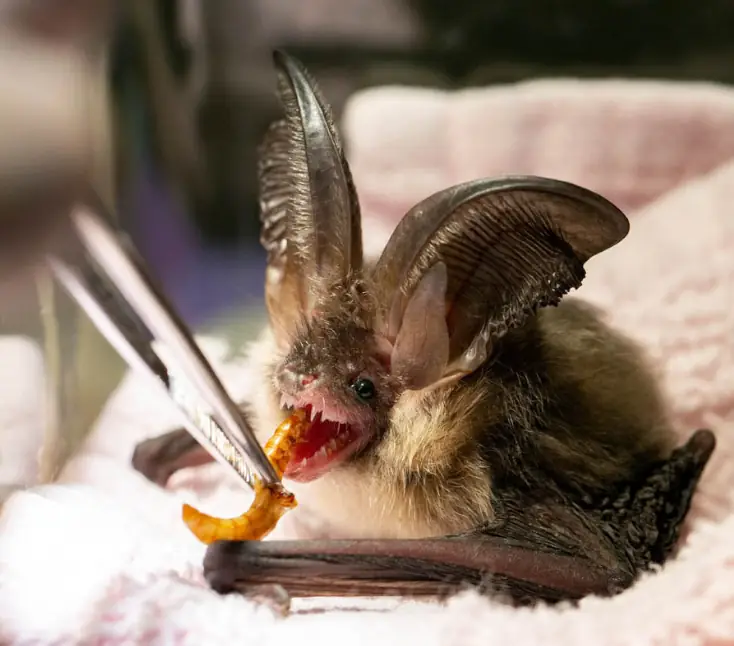
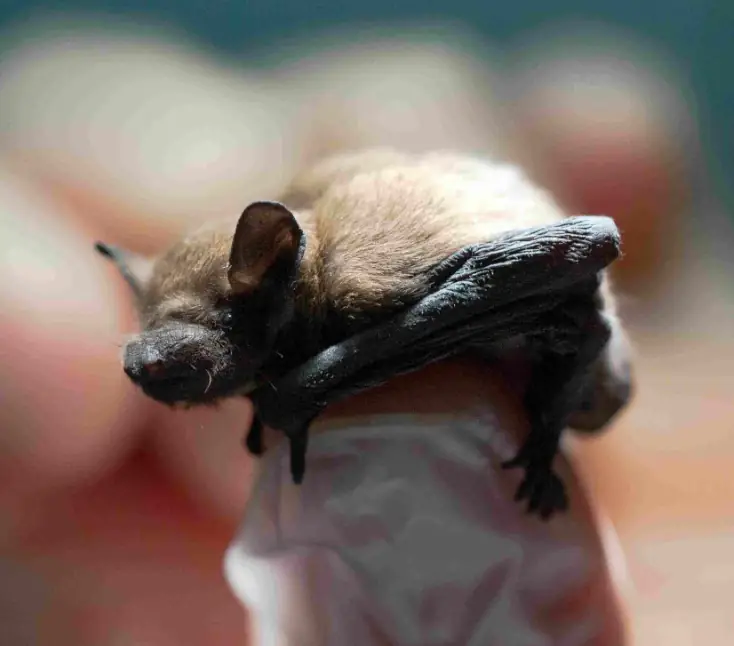
Behaviour
Bats catch their food (flying insects)by using a remarkable form of ‘radar’! As the bat flies through the air, it emits a series of ultrasonic squeaks (about12 – 15 per second). The sound waves from each squeaking call are projected out in front of the flying bat. As these sound waves come into contact with objects along the flight line, they bounce echoes back to the bat’s receiving gear, allowing the bat to avoid obstacles or to hone in on insect prey.
Bats play an important role in the ecosystem. Many plants depend, partly or wholly, on bats to pollinate their flowers or spread their seeds; they play a vital role in protecting our environment.
Breeding: Bats mating season usually occurs throughout autumn. Males will breed with several females in a group. The female bats then have delayed implantation until the warmer weather arrives in spring. In early summer, pregnant female bats gather together and form a maternity roost to have their babies, with gestation usually between 44-50days.
Their Threats
A reduction in food source is a major threat to bats. The use of pesticides, intense farming, and habitat loss, have all reduced the number of insects on which bats rely as their food source.
It is not widely reported, but light pollution is also affecting their natural feeding routine.
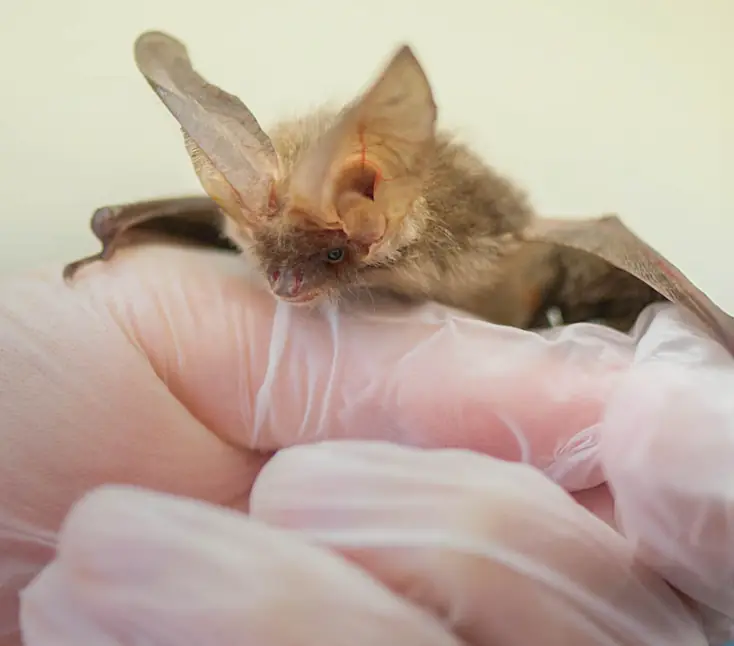
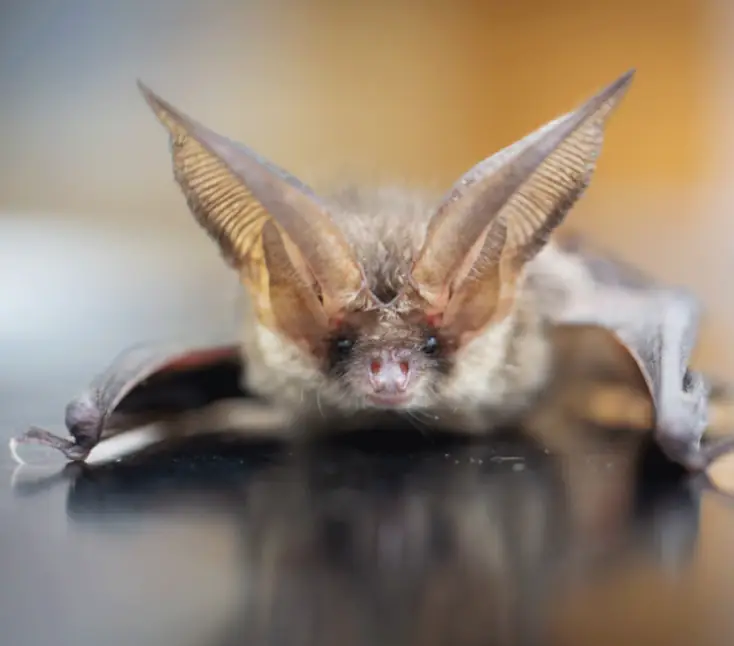
How you can help
There are a number of simple ways you can help bat species:
>Plant night-scented flowers, such as Evening Primrose and Honeysuckle, these will attract moths and, in turn, any bats looking for an insect-filled dinner.
>Provide drinking water. Many bat species are fans of ponds and lakes, not only to rehydrate, but for an easy meal made up of mosquitos and other flying insects.
>Reduce or remove any artificial lighting. Artificial lighting can alter the time a bat emerges from its roost. This then reduces their foraging time, and risks them missing the peak time of insect abundance (just after dusk). It can also increase their risk of predation.
>Provide a bat box. Many bat species are in decline because of the increasing loss in suitable and safe roosting sites. Similar to a bird box, but with a gap at the bottom rather than an entrance hole, bat boxes are easy to make and widely available to buy.
Useful contacts
Bat Conservation Trust (national): 0845 130 0228 / www.bats.org.uk
Surrey Bat Group: http://www.surreybats.org.uk/
Frequently Asked Bat Questions
I have a bat flying around inside my house
Bats have a very sophisticated system for finding their way around in the dark, but, despite this, some do end up getting trapped inside buildings. This happens most often between mid-July and mid-August, when baby bats are learning to fly, and they are inexperienced in using their newly-developed echolocation skills. This means that when they are finding their way back to the roost after hunting, they might crawl through the wrong gap or through an open window, especially if this window is beneath the roost entrance; they will then find themselves inside the house, rather than in the roof. Bats are very small and need only a very small space in order to gain access, so sometimes it can be very hard to tell how a bat got in.
NEVER try to catch a flying bat – you are likely to injure it severely and it may even bite in self-defence.
So what do you do? If it’s a warm evening, the best course of action is to close the door to the room, and to open the windows to the outside as widely as possible, dim the lights and give the bat the chance to find its own way out. Bats navigate by sending out high-pitched sounds and listening for the echoes, so the bat should soon detect any opening that leads out of the room. If it does not find its way out, it will roost somewhere in the room when it becomes light, and will appear again the following evening, at dusk. If you wish to search the room to ensure the bat has gone, the best places to look are in the folds of curtains and behind picture frames, and other places that are high up, where the bat can roost, out of the light. However, bats have been found hanging from the tassels at the bottom of an armchair, so do check at a lower level, as well.
At all other times, such as during daylight hours or during the winter, wait until the bat lands. Sometimes young bats, which are inexperienced flyers, will become exhausted before finding the way out. They may try to land on a wall or curtains, or they may crash-land on furniture or the floor. In this case, you should contain the bat and then release it in the evening.
To contain a bat:
Place a box (which should be shoe box or ice cream tub-sized) over the bat and slide a piece of cardboard under the box to make the floor of the container. If this is not practical, then put on a pair of thick protective gloves and pick up the bat and put it in the box. It is recommended that people wear thick gloves to handle bats because there is a tiny risk of some bats in Britain carrying a rabies-related virus, which could be transmitted through a bite or a scratch. Bats are not vicious, but a frightened wild animal may become distressed and bite.
Put a piece of cloth, such as an old tea towel, loosely crumpled, in one corner of the box. The bat will feel safer if it has something to crawl into and hide. Put a few small air holes into the lid and a very shallow container (such as a foil milk bottle top) of water in one corner, so the bat can have a drink.
To release a bat:
When releasing the bat, you should wait until dusk, or as near to that time as possible. It should be a warm, dry night. Place the box on its side, so the bat can crawl straight out. Bats need to drop and swoop to become airborne, so the box should be on the top of a wall or on a shed roof, at least five feet off the ground, as near as possible to where the bat was found. It should be placed somewhere safe from predators. The bat can then crawl out of the box and fly away, when it is ready.
If the bat does not fly away within 2 hours, it might need further attention, so take it back inside, as it will need to be passed on to a bat rehabilitator. If you pass the bat on to a bat rehabilitator, it is important to, also, pass on details of who found the bat, where and in what circumstances it was found.
I’ve found a baby bat
Firstly – are you sure it’s a baby? Bats are, generally, very small!
Baby bats are usually born in June. They are very small and have little fur. When their mothers go out to feed in the evening, the unsupervised babies sometimes end up in strange places in the house, such as the kitchen sink or shower, as they are small enough to fall down tiny cracks next to pipes or between floorboards. If you do find a baby bat, you must get expert help as quickly as possible. There may be a bat rehabilitator near you who can assist. Please, call for advice.
I have found a bat on the ground
A bat found on the ground during daylight hours is likely to be in trouble, already. Wearing thick gloves and using a soft cloth, pick the bat up, gently. Put the bat into a small ventilated box, and bring it to the Wildlife Aid Foundation or your local centre, for examination. Please, make a note of exactly where you found it, so that we can release it back to the exact location, when it is fully fit.
Bats are gentle creatures and seldom show any aggression, but they are wild animals and may be frightened or in pain. You must take care not to be bitten, so wear thick protective gloves and handle the bat as little as possible. Most of the UK’s bats have such small teeth that a bite will not break the skin. However, a strain of the rabies virus has been found in a small number of British bats, so, although the risk is very small, you must take precautions to avoid being bitten or scratched.
There's a bat hanging on my wall
If the bat is out of the way of passers-by and cats, then it is best to leave it where it is. Sometimes bats do roost in the open air, especially in the mating season, during the autumn. However, if the bat is somewhere where it could be in danger, please, contact your local bat group. Bats do sometimes die hanging on walls. Their legs are constructed in such a way that they will not lose their grip when they are relaxed – so, if it has been there for a number of days, this might be what has happened. Again, please, contact your local bat group.
What should I do if I'm bitten by a bat?
I have bats in my roof and want to get rid of them
All bats are a protected species, by law, and it is illegal to kill, injure or take a wild bat, or intentionally or recklessly damage, destroy or obstruct access to a bat roost. Just think of all the insects they eat every night and how many more mosquito bites you would suffer if your bats weren’t there!
If you are worried about having bats, or want to know how to move them on, it’s best to get in touch with your local bat group (Surrey Bat Group, in our case) or the Bat Conservation Trust (BCT) 0845 1300 228, who will send out a licensed bat handler to assess the situation. Although bats do have legal protection, the law does not expect people to co-exist with bats in the living area (i.e. bedrooms, sitting room, etc.). Please, don’t be afraid to contact a bat group or BCT for fear of their putting the rights of bats above those of humans. BCT works to ensure people and bats can live together in harmony, and are there to provide advice, guidance and information.
I’ve seen a bat flying during the day
Although bats are nocturnal creatures, they do sometimes emerge to hunt for insects, during the day. This is more common on mild winter days or during the early spring, when bats wake naturally from hibernation and come out to stock up their reserves and hunt insects that may also have emerged because of the mild weather. After this, they go back to their hibernation site to sleep until the next mild spell. If the weather is very bad, then bats will not go out at night to feed; so, if there has been a period of bad weather, bats will sometimes risk hunting during the day, in order to get enough food.
I have found a bat during building works
Bats and their roosts are protected by law. This means, if work needs to be done to any building that is known to contain a bat roost, or that may contain a bat roost, the relevant statutory nature conservation organisation (SNCO) must be contacted, in advance, for advice. If bats are discovered during work, then the work must stop, immediately, until the relevant SNCO has been contacted and advice given. It is also important to seek advice if you need to treat timber in the roof of a known bat roost.
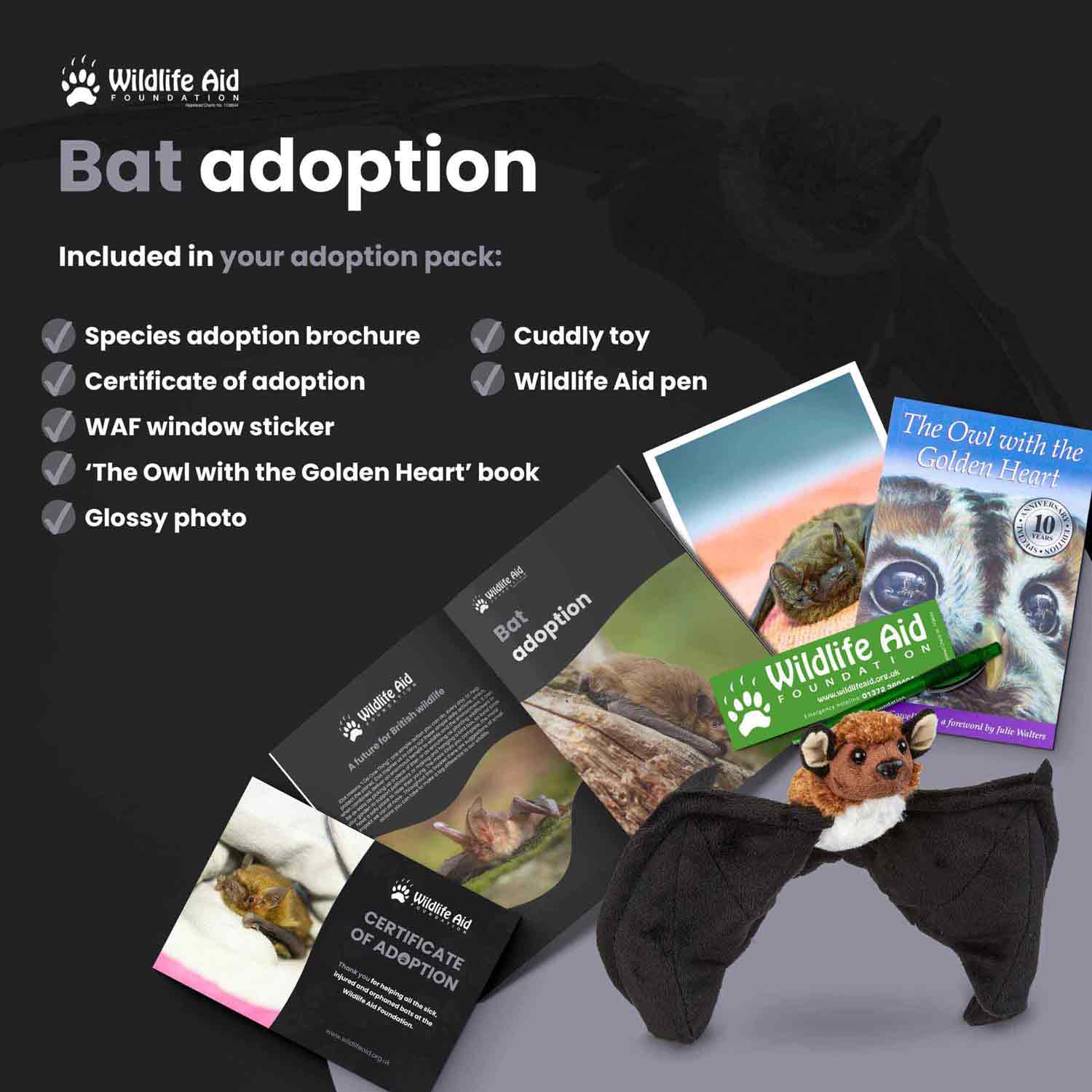
What’s included in your bat adoption pack
Not only will you be providing invaluable care and helping countless animals, but you will also receive an exclusive bat adoption pack, including cuddly toy, species brochure, certificate of adoption, photo and more. NOTE: The pack will include either ‘The Owl with the Golden Heart’ book or ‘Wildlife SOS’ book, dependent on stock.